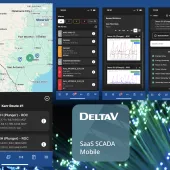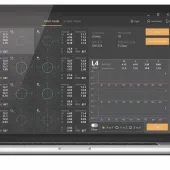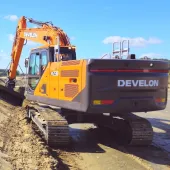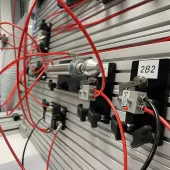Site Monitoring and Maintenance of Conveyors and Elevators
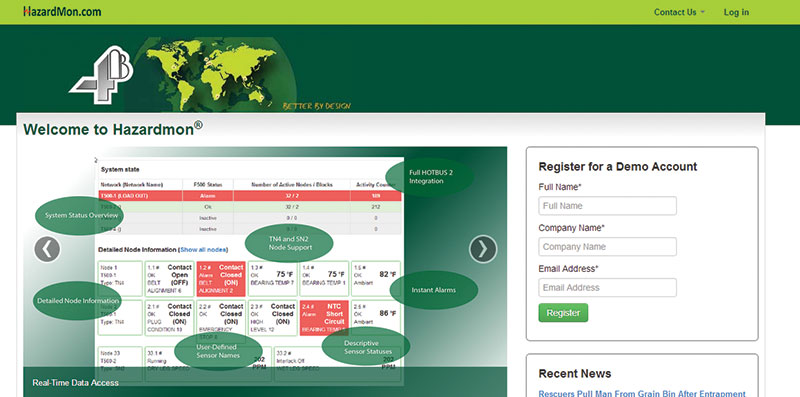
First published in the June 2015 issue of Quarry Management as Hazardmon.com
Konstantin Anissimov, electronics sales engineer with 4B Braime Elevator Components, outlines how Hazardmon.com, a secure cloud-based solution, is designed to revolutionize the site monitoring and maintenance of conveyors and elevators
It is well known that transporting dry dusty materials can create explosive atmospheres. Four conditions have to exist in order for the explosive state to occur. First, there needs to be high concentration of dust, then there must be oxygen, and there should also be an ignition source. If all of these appear in a confined space – an explosion will happen. The most common ignition sources have long been identified as overheated bearings, a misaligned or slipping belt, or misaligned pulleys. The industry is saturated with various sensors and controllers that monitor these conditions and stop machines automatically to prevent explosions.
These systems (including a variety of systems from 4B) work really well, but there is one big problem with all of them. They all rely on the on-site personnel not to modify the system in order to run in bypass mode. With the ever-growing demands on the performance and efficiency of terminals and processing facilities, it is understandable that a shift manager may make a decision under pressure to keep a leg in operation even after an alarm has been detected. It has to be appreciated that there are still a number of ways to cheat the safety system and carry on running regardless of the dangers imposed on equipment and personnel.
4B Components have identified this problem and created a solution that will, they say, revolutionize the industry by introducing a greater level of transparency and record keeping. Hazardmon.com is a secure cloud-based industrial monitoring solution that allows any registered user to login and see all their facilities in real time from anywhere in the world. The product offers seamless integration with 4B’s communication BUS system – the T500 Elite ‘Hotbus’.
Hazardmon.com platform features
- Modern, simple and user-friendly website
- Secure and encrypted login and industrial strength data transfer (256 bit SSL) to ensure website security and data safety
- No on-site server or PLC needed; no upkeep and upgrade costs; and no hardware to replace or backup. The F500 Ethernet Fieldbus sends data directly to our server in the cloud
- All data stored in the cloud and backed up in multiple locations making it extremely secure. The end-user does not need to backup the data off site. In the event of an explosion, because the data is stored off site it will not be lost, and it would be possible to analyse the data and use it as evidence in determining the cause of the explosion
- The web server is constantly being updated and the user experience improved. Additionally, an increasing number of products from 4B are being supported. The product provides peace of mind that a facility will always be at the leading edge of technology.
Live sensor view
It is possible to view multiple sites from one system dashboard page. This is unique as the normal procedure is to login to each site’s VPN and then view each SCADA/PLC system one by one. The latter is very long and complicated to set up and is not user-friendly. Hazardmon also indicates all active alarms from all the facilities in one place as soon as login has taken place. The manager can see if any problems exist at any of his or her sites in seconds.
All the sensor data can be viewed in real time in any browser. The website is completely dynamic and the sensor status and value are updated automatically without the need to refresh the web page. The website has been designed to dynamically resize as the screen resolution changes and is optimized for tablet and mobile phone platforms.
Historical data analysis
All data can be viewed as graphs. A unique drag-and-drop feature of the graphing page allows for a quick display of graphs for the sensors of interest and compares the values side by side. A range of time windows can be selected, ranging from 1h to 30 days. Charts are interactive and show point values and sensor statuses on mouse-over as well as supporting zooming and scrolling.
All alarms are stored in a separate alarm log. Using the website filtering options it is very easy to generate a report and save it as an Excel spreadsheet. All the alarms are grouped into different alarm types, such as ‘Alarm Detected’, ‘Alarm Cleared’, ‘Device Power Up’ etc. This allows information to be extracted in a few clicks and a report to be created in seconds.
Email and SMS notifications engine
A very flexible notification system allows any user to receive email notifications when sensors go in to and out of alarms; when the Internet connection between the ‘Hotbus’ system and the server is lost; or when an alarm has not been cleared for a number of minutes. It is possible to receive emails only when an alarm has not been cleared for a specified number of minutes or if more than a specified number of alarms have been detected at a particular site in the last hour.
Report-generation tool
An advanced analytics tool allows reports to be generated that summarize the safety and efficiency of the plant. It is possible to see which sensors caused most of the alarms, which hours of the day had most alarms, and a pie chart can be created showing the distribution of alarm types. The start and end dates of the report can easily be altered and the report re-generated. It can then be saved to the user’s PC in a single click.
Automated maintenance and testing functionality
Periodically, it is important to check that the electronics monitoring system will, in fact, detect an alarm when a dangerous condition occurs. The current standard in the industry is for the technicians to walk around the site and test the sensors. A paper report is then generated and, in some cases, this report is converted to an Excel spreadsheet or similar. However, there is still absolutely no guarantee that the technician has actually performed any or all of the testing. Hazardmon’s automated sensor test tool function on the website (called ‘Maintenance’) is unprecedented and novel. It ensures test procedures are carried out, logged and reports automatically generated, facilitating sensor testing for technicians and giving confidence to site managers.
This feature provides documented evidence that each sensor has been tested to ensure it is working correctly and is capable of generating an alarm when needed. The user simply needs to go to the maintenance tab of the website and click on a sensor that needs to be tested. The website then temporarily stops the alarm notifications for this sensor, so that no nuisance alarm notifications are sent out. The user then has five minutes to cause an alarm and five minutes to clear the alarm. The whole process is fully automated and a report can be generated at the end of the process in just a couple of clicks.
Conclusion
As more and more facilities have an electronic system installed to monitor the site’s safety, the main cause of problems, which is the human factor and lack of transparency, still exists. Hazardmon.com combined with the 4B Hotbus monitoring system will provide the senior management, engineering management and technicians with real-time access to the data, significantly increasing transparency and thereby allowing the management to be certain that company policies have been fully adhered to and that their facility is safe.
To try out this product, go to www.hazardmon.com and register for a free demo account, which will provide access to all the features of a full account. If you think Hazardmon.com could be a suitable system for your facility, a 4B representative will then be happy to set up a webinar and explain the system benefits and advantages in further detail.
- Subscribe to Quarry Management, the monthly journal for the mineral products industry, to read articles before they appear on Agg-Net.com


